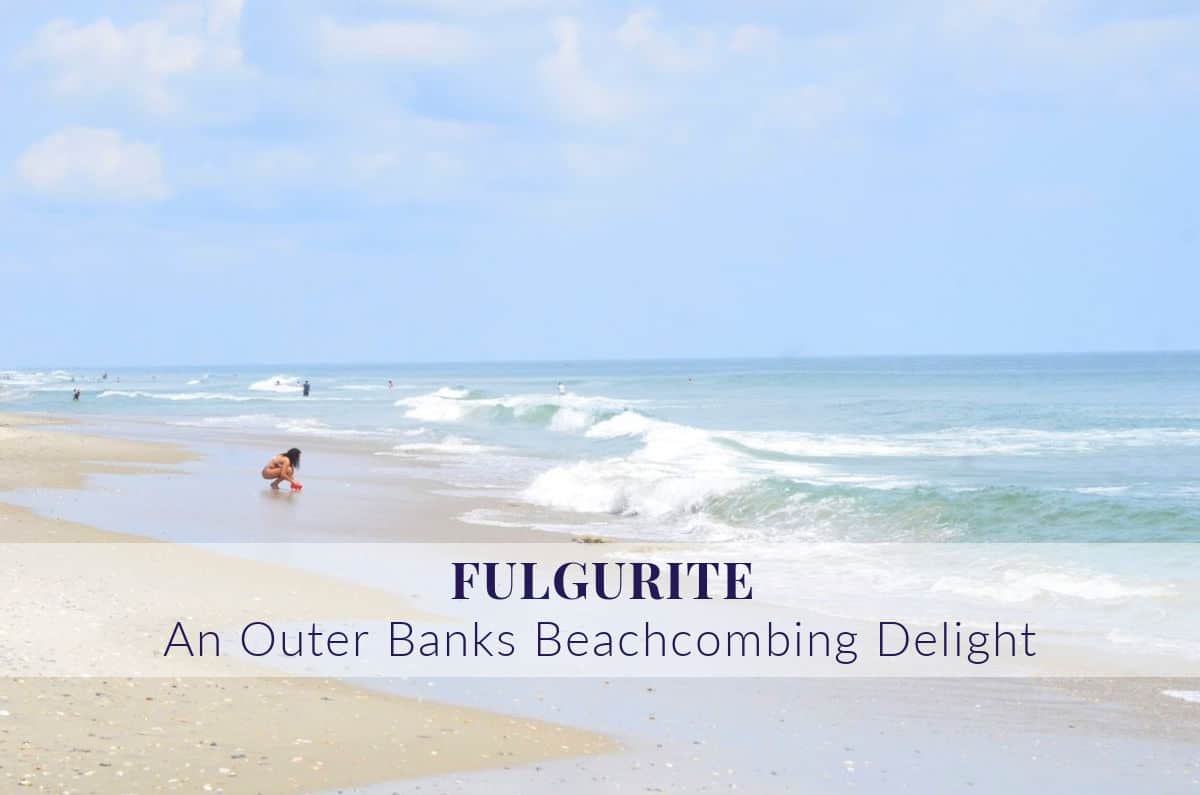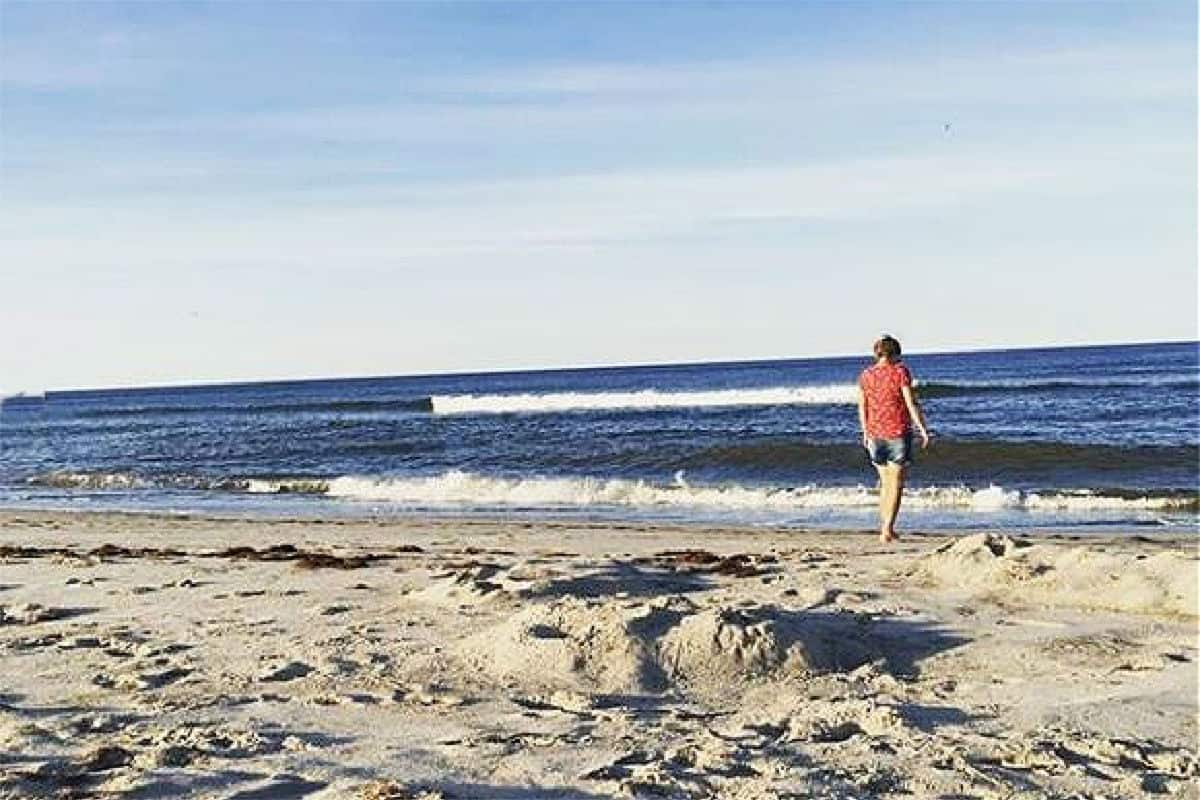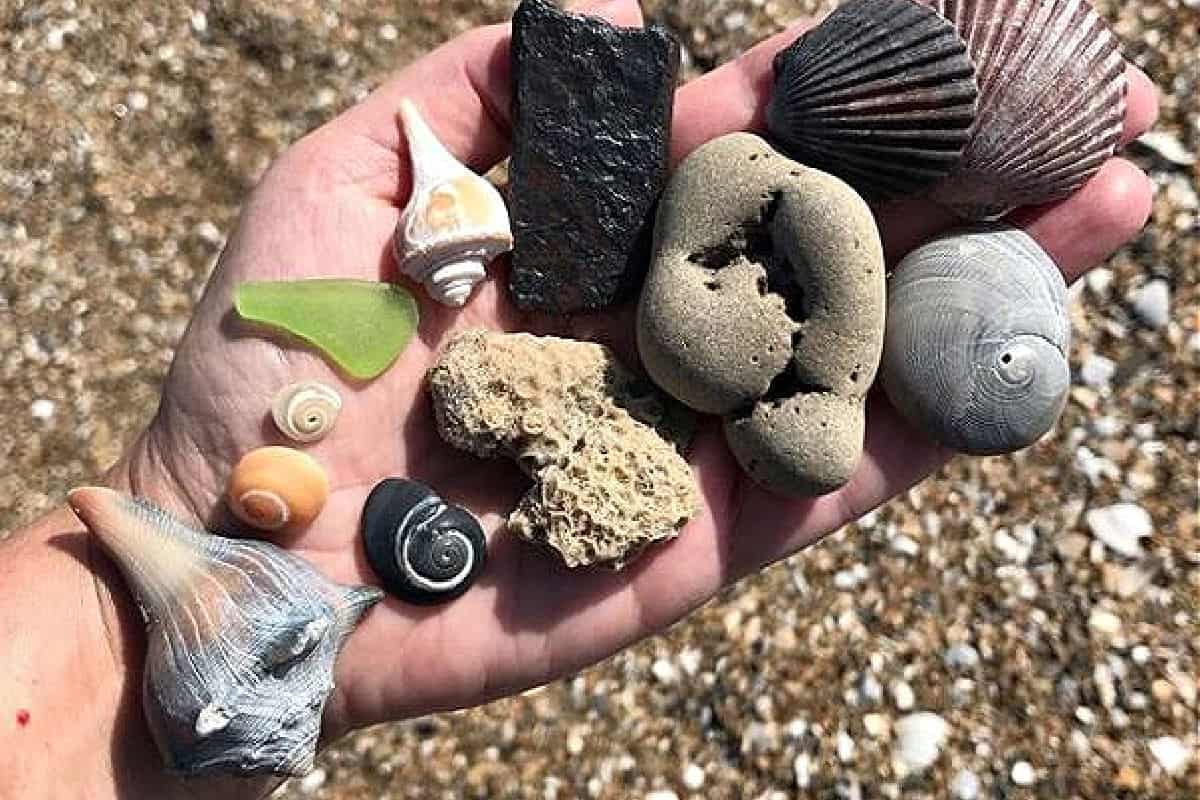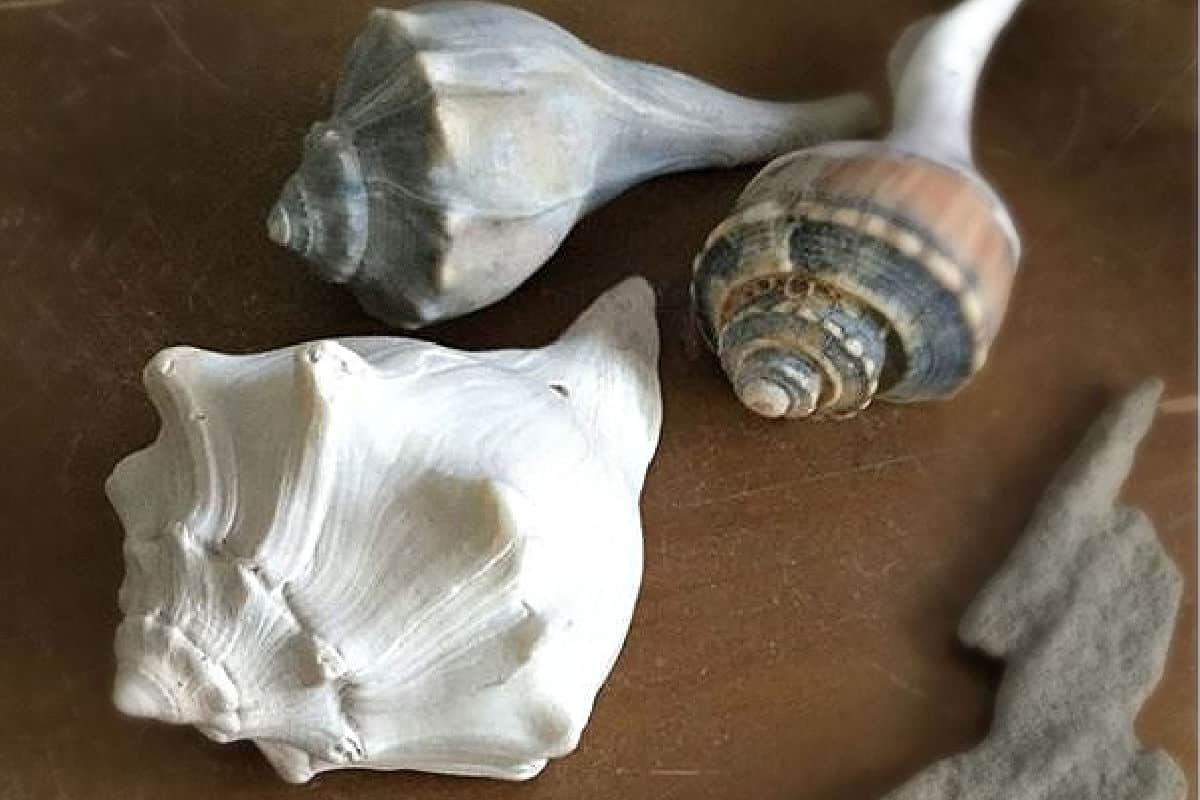
The Outer Banks are 175 miles long and excellent for endless beachcombing
After days of random thunderstorms along the Outer Banks of North Carolina there is a light at the end of the tunnel, but we careful it may strike you. I am talking about beachcombing after a storm on the OBX. For everyone who is let down by the passing storms, some beachcombers are secretly scheming and planning to hit the best “honey holes” for shelling and other miscellaneous finds that come ashore after a big storm.
One of the most fascinating discoveries besides old medicine bottles and bits and pieces from the hundreds of shipwrecks we find, is fulgurite.
WHAT IS FULGURITE?

Fulgurite can be found on the Outer Banks beaches in North Carolina

A beachcomber displays fulgurite (lightning sand) with a piece of seaglass
After a lightning storm passes over sand, this can be any of our miles and miles of beaches, ocean or sound side, sandbars or sand dunes like Jockey’s Ridge or the lesser known little sister, Run Hill Dunes, bolts hit the ground and heat the sand into shapely fulgurite.
Fulgurite is commonly called “Lightning Sand” and is always a treasure to beachcombers, because no two pieces of lightning sand are alike.
Some fulgurite takes the shape of tubes, while others can take many different shaped, but typically will appear slightly darker than the sand they are sitting on, like a wet sand color. And most of the time the inside will be hollow glass.
HOW HOT IS IT?
When lightning hits the sand, the silica, which is the main mineral in sand, then melts and fused together the sand particles and hardens into the unique shapes of fulgurite. 100 million volts can be discharged into the sand. Sand melts at about 1800 degrees Celsius, and a bolt of lightning can reach 30,000 degrees.
HOW RARE IS IT?
Fulgurite is a rare find but ask any OBX’r so is seaglass. But countless people share their seaglass and beachglass finds on Instagram, so it is still to be found. We have plenty of sand, and we often get electrical storms, so chances are good you can find a piece of fulgurite when you visit less popular beaches.
WHERE TO FIND IT

Beachcombers love to find fulgurite after a storm on OBX beaches
To find fulgurite, it’s best to head out early after a storm. The debate is ongoing whether low tide is better than high tide for many beachcombers. Low tide reveals things, high tide brings them in. For many who beachcomb, they say “any tide” is a good tide. It also depends on who was there before you.
A favorite more isolated stretch of beach for beachcombers is on Pea Island National Wildlife Refuge, just South of the Oregon Inlet. Or if you have a 4×4 beach permit, head on down near Oregon Inlet or any other ramp down the Cape Hatteras National Seashore. And, if you’re staying south of the Oregon Inlet, even better for your fulgurite and shelling beachcombing adventures.
CAN YOU KEEP FULGURITE?

A handful of special finds beachcombing on Pea Island NWR, can you spot the lightning sand?

Always keep your eyes out for other beachcombing treasures like these whelk shells on the Outer Banks
The answer is yes. While the Cape Hatteras National Seashore is protected, but you have permission to take shells (if uninhabited) and fulgurite. If you discover a relic of any sort, they would like you to tell them about it.
Hint: Unlike some coastlines, there aren’t rocks on Outer Banks beaches, so if you see something while beach-combing that is not a shell, nor a piece of wood, look closer and see if perhaps you have discovered a piece of fulgurite.
If living near the beach has been your dream, or owning an Outer Banks vacation home, we’d be pleased to help make it a reality.
Visit our real estate page here to see available homes, and to search OBX MLS, explore our communities here, or just give us a call at 252-301-3090 to learn more.


